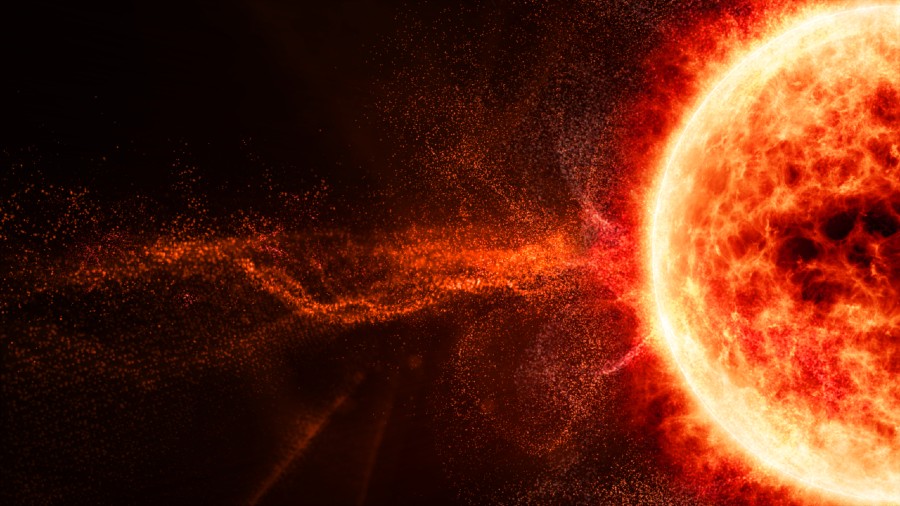The big news about the sun is that there is no big news. We are blessed, astronomers say, to be living next to a “boring star”. But the inhabitants (if there are any) of the planets orbiting the neighbouring star Proxima Centauri, only 4.2 light-years away, are less fortunate.
In April, astronomers said that a massive flare had erupted from its surface in 2019. For seven seconds, as a battery of telescopes on Earth and in space watched, the little star had increased its output of ultraviolet radiation 14,000-fold, in one of the most violent such flares ever seen in our galaxy. This was more than serious sunburn territory. “A human being on this planet would have a bad time,” said Meredith MacGregor, an astronomy professor at the University of Colorado, US, who led the worldwide observing effort.
Space weather on this scale could sterilise potentially habitable planets, and could augur bad news for the search for life. Even mild space weather can be disruptive to creatures already evolved and settled; sunspots and solar storms, which wax and wane in an 11-year cycle, spray energy that can endanger spacecraft, astronauts and communication systems.
A new cycle of storms will begin any day now, and astrophysicists are divided on how active or threatening it will be. The sun may be about to set records for sunspot numbers and violent storms, or it may be sliding into a decline.
Cosmic mortgage payments
“We live in a star’s atmosphere,” as Scott McIntosh, a solar physicist at the National Center for Atmospheric Research in Boulder, Colorado, US, often says. “As a civilisation we take our star for granted.”
Here, 93 million miles from the nearest star — the one we call our sun — we exist and mostly thrive on the edge of almost incomprehensible violence and complexity.
The sun is a medium-size star, a ball of blazing-hot ionised gas 1 million miles in diameter. Its inside rotates faster than its outside, and the outer layers rotate faster at the equator than at the poles. The result is a snarled nest of magnetic fields, which manifest as sunspots and worse when they break the surface.
Every second, thermonuclear reactions at the centre burn 600 million tons of hydrogen into 596 million tons of helium. The missing 4 million tons, turned into pure energy, constitute the mortgage payment for all the life on Earth and perhaps elsewhere in the solar system. As the energy emerges from the sun, it rises through successively cooler and less dense layers of gas and finally, 1,00,000 years later, from the photosphere, or surface, where the temperature is just 5,700 kelvins, or 9,800 degrees Fahrenheit.
The action doesn’t stop at the sun’s surface. That friendly yellow photosphere boils like oatmeal and is pocked with dark magnetic storms or sunspots that crackle, whirl and lash space with showers of electrical particles and radiation. The corona, composed of thin, superhot streamers of electrified gas, and visible only during solar eclipses, extends millions of miles from the glowing surface.
Things sometimes go wrong, although so far on a scale far below the outbursts seen on Proxima Centauri. As the magnetic fields generated by all that swirling, electrified gas emerge on the sun’s surface, they become twisted and tangled. Eventually they snap and reconnect in loops, releasing enormous amounts of radiation and charged particles — an explosive solar flare that can be more powerful than millions of hydrogen bombs.
Peak season of sunspots
Such storms are more likely to occur during the high points of the sun’s mysterious 11-year cycle of sunspot activity. Lately, the sunspot cycles have been getting weaker. During the last cycle, 101 spots were observed on the sun in 2014, the year of peak activity; that was well below the historical average of 160-240.
Last year, a committee of scientists from Nasa and the National Oceanic and Atmospheric Administration forecast that the coming cycle would be similarly anaemic, with a peak in 2025 of about 115 sunspots.
But McIntosh and his colleagues have produced a different forecast — of over 200 sunspots at its peak. The 11-year sunspot cycle, the researchers say, based on an analysis of 140 years of solar measurements, belies a more fundamental 22-year Hale cycle, named after its discoverer, George Ellery Hale. During that period the sun’s magnetic field reverses its polarity, then switches back.
Each cycle ends or begins when two bands of magnetism, migrating from opposite, high latitudes of the sun, meet at the equator and annihilate each other. On average each phase of the cycle takes 11 years, but it can vary.
McIntosh and his team found that the longer a cycle went on, the weaker the next cycle would be, and vice versa. The current cycle, the 24th since record-keeping started, shows every sign of ending after a little more than 10 years — shorter than average, which means the next cycle should be strong.
The elephant and the stars
At stake, besides the health of our planetary infrastructure, is the pride astronomers take in feeling that they understand the complicated and violent processes going on behind the sun’s relatively calm face.
“I think the problem with the sun is we’re too close to it, and so there’s too much data,” McIntosh said. He called it a breaker of models: “Your models are going to fail eventually. It’s part of the reason why it’s so hard to forecast the weather, right? Because our observations are so detailed, but you know it’s hard to get it absolutely right.”
Tony Phillips, an astronomer who runs the website Spaceweather.com, agreed. “In my experience, when people really understand something, they can explain it simply,” he said. “It is striking to me that almost no one in the solar-cycle prediction business can explain their favourite dynamo model in a way that lay people can ‘get it’.”
The situation reminded him of the proverbial blind men who try to produce a Theory of Elephants, with one of them focussed solely on feeling the animal’s trunk.
“Scott and Bob are standing off to the side shouting, ‘Hey, you guys are ignoring most of the elephant,’” he said. “In other words, there’s more to the solar cycle than is commonly assumed by conventional models. And so, according to Scott, they are doomed to get the big picture wrong.”
NYTNS










